- Learn about the history of the iconic, red waxed thread that is used to stitch 108 double stitches (or 216 single stitches) on every baseball
- Understand how baseball stitches impact the game and what it means to youth and adult baseball leagues

Table of Contents
How Many Stitches Are on an MLB Baseball? – MLB Rule 1.09
The specifications outlined in the MLB has changed little since 1950s.
The Rule 1.09 states the following:
The Ball should be a sphere formed by yarn wound around a small sphere of cork, rubber, or similar material covered with two stripes of white horsehide or cowhide, tightly stitched together. It shall weight not less than 5 nor more than 5 1/4 ounces avoirdupuois and measure no less than 9 or more than 9 1/4 inches in circumference.
The cork nucleus, enclosed in rubber, is wound with 121 yards of blue-gray wool yarn, 45 yards of white wool yarn, and 150 yards of fine cotton yarn. Core and winding are enclosed by rubber cement and a two-piece cowhide (horsehide before 1974) cover hand-stitched together with just 216 raised red cotton stitches.
History of the Baseball Stitch
When you search for “baseball stitches”, you probably have seen hundreds of images like this:
Despite many changes in how baseballs are constructed today, the enduring image of the red-stitched baseball remains an iconic symbol of deep-rooted history of the baseball stitching craftsmanship.
Baseball Stitching Purposes and Functions
One of the most important elements of the baseball design is the intricate stitching pattern that often goes unnoticed by casual observers.
Baseball stitches are sometimes referred to as virgules (the French word for commas or slashes), these “V” stitches form a tight link to form a relatively smooth surface between two baseball covers which are butted against each other.

The stitched seams on a baseball provide important functions that directly influence a baseball game so let’s dive into why baseballs need to be stitched, the purpose of such stitching, and the functional impact of these stitches in detail.
Why Does a Baseball Need to be Stitched?
A baseball consists of a core center wrapped in layers of yarn and threads, over which a layer of leather is tightly fitted.
The last two pieces of leather covers must be joined together using a red baseball stitching thread to securely enclose the core of a ball.
Without these stitches to join two leather halves, the resulting ball will resemble something like the Cuban baseball in the 1800s, lacking structural integrity and durability to last a game.
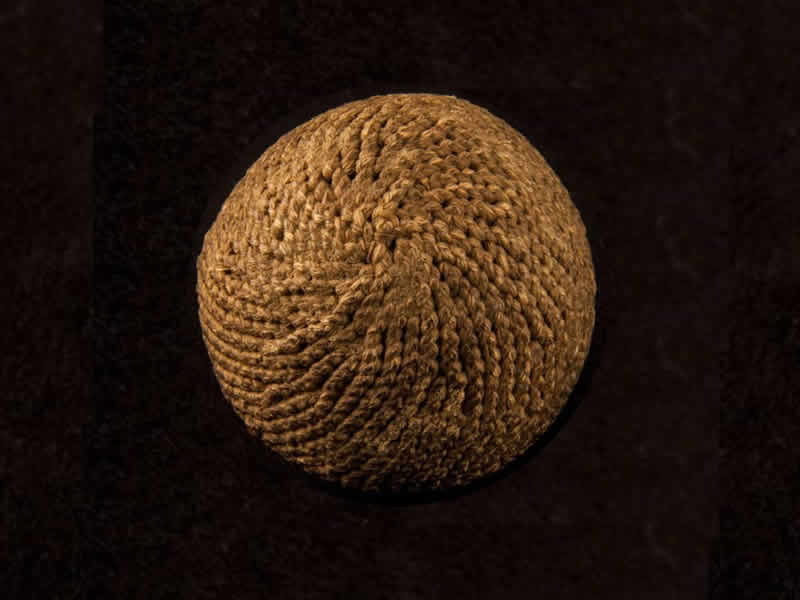
Just imagine throwing a plastic “wiffle” ball without any holes and try to consistently throw a curveball over and over. An unstitched baseball wouldn’t move through the air in the same way, making it hard to predict and control the path, speed, and direction of the ball.
The necessity of stitching, however, goes beyond mere structural requirements.
These stitches create a defining feature of the baseballs: the seams.
Raised, Rolled, or Flat Seams
A seam on a baseball is created when two leather covers are butted against each other than sewn using a baseball stitch pattern.
Baseballs with raised seams
Are baseballs with raised seams stitched differently than low or flat seamed baseballs? The short answer is no. The raised seams serve a critical function to providing the grip and the tactile interface between the player and the ball.
Mostly found in youth and high school baseballs, raised seams train young players to recognize the grip without looking at the baseball, older pitchers an enhanced pitch control.
In many cases, baseball covers are cut slightly larger so when edges are butted against each other, it creates a small ridge. Combined with wider stiching tracks, these raised seams give a unique bumpy feel to players. With enough practice, a young player can identify various pitching grips just by feel alone, including the 2-seam or 4-seam grips.
How do manufacturers create rolled seam baseballs?
As players get older and move up to the big field (for more information on this topic, read Complete Guide to Baseball Field Layout), seams are lowered to decrease the air drag and increase the overall distance on a batted ball.
To make low seam baseballs, baseball leather covers are cut to the exacting size standard, seam tracks are narrowed, then inserting the completed baseballs into a machine with two large, rotating metal discs to squeeze or compress the seams for about 15 to 20 seconds.
Who uses flat seam baseballs?
Flat seam baseballs almost always found with synthetic covered baseballs and are designed to be used as practice balls.
Designed specifically as inexpensive practice balls (but sometimes used as game balls for young beginners), threads on baseballs are tightly stitched to “sink” into the synthetic leather covers.
In most cases, baseball stitching threads are also synthetic, making the surface very slick.
Kevlar Stitched baseballs designed for pitching machines
Baseball manufacturers also design flat seam baseballs by mating Kevlar threads with leather covers for the two- and three-wheeled pitching machines.
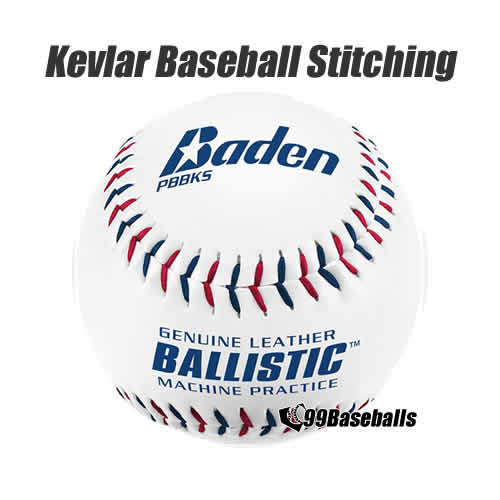
Cotton stitches have low tensile strength than Kevlar threads. Cotton threads are also not as durable when it comes to repeated frictions at high speeds so regular baseballs will not last long when used with pitching machines.
Kevlar threads designed for pitching machines will maintain its integrity with repeated use.
The Functional Impacts – Grip and the Magnus Effect
Perhaps the most fascinating aspect of baseball stitching is its influence on the ball’s physics.
The Magnus Effect
The stitches give a baseball its unique aerodynamic properties. When a ball moves through the air, the raised seams disrupt the smooth flow of air around the ball, causing a phenomenon known as the Magnus Effect.
The Magnus Effect refers to the deviation in the ball’s trajectory caused by the spin and the air flow over the ball.
Pitching Grip
Combined with the Magnus Effect, a variation in pitching grip with seams allow skilled pitchers to execute an array of pitches, including curveballs, sliders, fastballs, and changeups which are essential that bring strategy and excitement to the sport.
Below is a sample curveball grip demonstrated by Justin Verlander and what the batter will see:
Verlander’s curveball usually clocks at 80 miles per hour which is pretty slow, but he combines the grip and ball rotation to make opponents pretty silly.
He is also able to vary his pitching speed from 70s to 80s to make throw off the hitter’s timing.
In addition, baseballs used in Major League Baseball (MLB) have narrower seam tracks, compared to baseballs used in college, making them far less air-resistant (i.e. ball travels fast).
Ball Rotation
While some MLB pitchers with a 12-6 curveball can inadvertently leave the ball “hanging” (in the strike zone), Verlander throws with extreme velocity to amplify the Magnus Effect to create a dramatic movement.
^ Return to the Table of Contents
Why are stitches on a baseball red? Stitch Color and Aesthetic Importance
Traditionally, the stitching thread has been dyed red (Madeira color code 2003), providing a distinct contrast against the white leather cover of the baseball. This is more than just an aesthetic choice.
The baseball stitch’s contrasting red color against the white leather allows a batter to see a certain pattern that is associated with a particular pitch. In that split second, a more experienced batter can adjust their hitting mechanics in order to increase the chance of hitting the ball.
Each pitch (like a curve ball, 4-seam fastball, etc.) makes a certain pattern which makes it easy for players to track its trajectory during play, especially under different lighting conditions.
Baseball stitch threads are also treated to give it certain properties like lubrication (for easier threading) and water repellence (to minimize water absorbance)..
How Many Baseball Stitches are on a baseball? 108 or 216?
There seems to be a lot of confusion and incorrect information about the number of stitches on a baseball.
Each baseball consists of 2 baseball covers that are joined together by 108 double stitches or 216 single (individual) stitches.
If you count the number of thread coming out of each hole, there are 216 individual stitches on a base ball. If you count two opposing stitches as one stitch, there are 108 double stitches on a baseball (108 x 2 = 216).
No one knows for sure why American and National leagues settled on 108 double stitches, although I suspect a lot of it had to do with owners wanting to save money by making durable baseballs.
That aside, here are some fun facts about the 108 “magic number”:
- It takes 108 outs to win the National League Championship Series (NLCS)
- It takes 108 outs to win the MLB World Series
- AG Spalding, one of the first manufacturers to make the widely used figure-8 baseballs, used 108 stitches and managed to incorporate this into MLB rulebooks?
If you are a Cubs fan, there are many more 108 magic number coincidences. Check out the article here.
Why not make a baseball with LESS than 108 stitches?
I suppose if MLB wanted 107 or 109 stitches, that would have been fine, so settling on the exact 108 stitches probably means that it was done to coincide with one of the “magic number” reasons (but I could be totally wrong).
However, from a designer’s perspective, we can make some logical guesses.
Take a look at a baseball below that was made sometime around 1910. Putting aside the fact that spaces between stitches are highly irregular, we can see that spaces are too wide.
Extra wide spaces allow “ripples” in seams, which allows dirt and moisture to get inside.
Below is a modern baseball re-stitched by skipping every other hole, thereby ending up with 54 double stitches.
By skipping every other stitch holes, we can see that the thread length from hole to hole is now longer (A), and the thread angle has sharply decreased (B).
Longer thread length means side covers are more likely shift when batted and decreased angles between two opposing thread means more force is exerted on them. The end result is that the ball will be significantly less durable and ball
Then Why Not make a baseball with MORE than 108 stitches?
The leather thickness is around 1/8″ inch (3 mm) and the perimeter of each cover is 17 1/4″ (44cm) which averages out to roughly 7 stitches for every inch.
That does not leave much space between each stitching holes (1/8″ spacing), and exceeding 108 stitches will make it resemble more like a perforated edges.
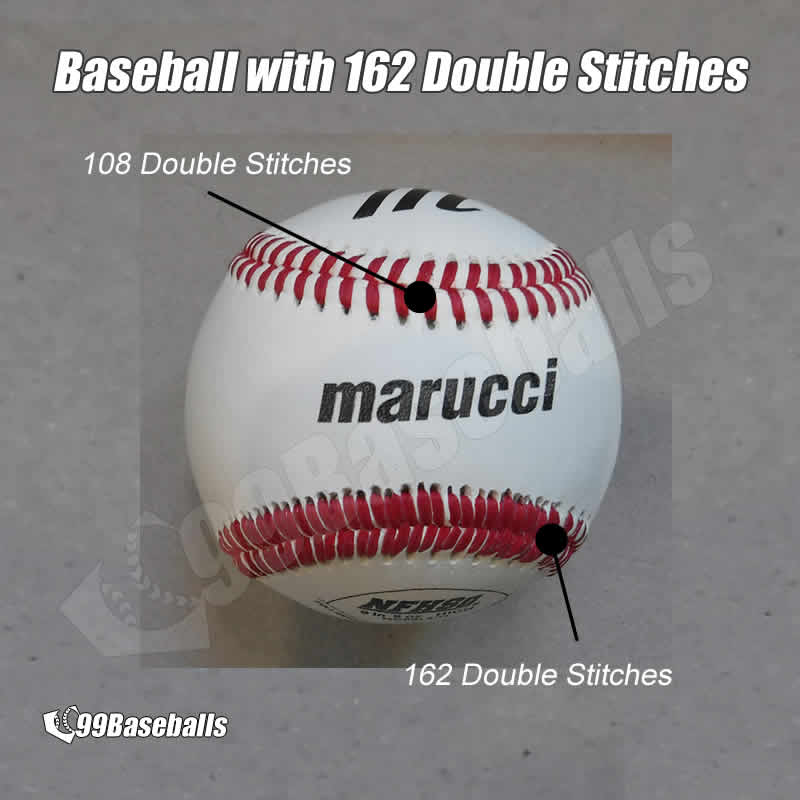
Leather experts agreed that having more than 108 holes on each leather cover will weaken the hole strength, ironically making the baseball less durable.
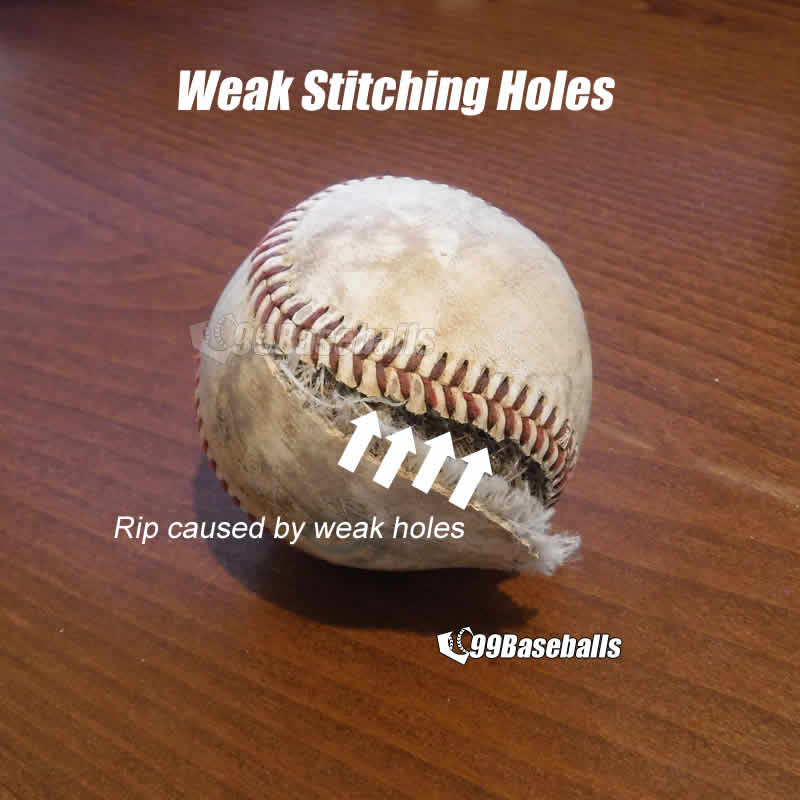
In addition, baseballs with excessive stitches will resemble that of the dreaded lemon peel seams used in 1830.
^ Return to the Table of Contents
Baseball Stitch vs. Baseball Stitching
It is confusing when fans sometimes says “baseball stitch” or “baseball stitching” when referring to a red, waxy thread found on most baseballs.
While both share the core word “stitch”, there are clear differences between the words baseball stitch and baseball stitching.
Baseball Stitch Defined
“Baseball stitch” refers to the individual loops of thread used to hold the ball’s two leather covers together. This stitch pattern is responsible for providing the ball’s integrity and performance characteristics. The stitches are typically red and form a half-hidden, X-pattern.
Baseball Stitching Defined
In contrast, ‘baseball stitching’ refers to sewing stitches into the baseball.
A skilled worker makes stitching a baseball look easy, but the proces requires delicate hands born out of years of learning complex knowledge and techniques.
For example, a worker must maintain a correct tension throughout the stitching process to ensure stitch tightness and pattern uniformity.
Why does it matter if I say baseball stitch or baseball stitching?
Ultimately, baseball-stitch and baseball-stitching combine to form a single, continuous seam on a baseball.
The seam’s height, tightness, and texture affects the pitcher’s grip, thus influencing the types of pitches used during a game.
In conclusion, both ‘baseball stitch’ and ‘baseball stitching’ are fundamental aspects of baseball manufacturing. They represent a harmony of form and function, intricacy and simplicity, and science and art.
As the physical component, baseball stitch forms the functional skeleton of the baseball, while the baseball stitching process breathes life into the baseball.
How many seams are on an MLB baseball
If there are two baseball covers put together with 108 double stitches, there must be at least two seams, right? Or maybe you heard of 2-seam or 4-seam fastballs and think wow, there must be four seams on a baseball?
Intuitively, it is hard to imagine sewing two covers with a single string but that is exactly what happens when making a baseball.
There is only ONE seam on a baseball, stitched with a red waxy thread that is 88 inches in length.
Two-seam and four-seam fastballs get their names after the pattern on a rotating pitch from the batter’s perspective.
You can see what each pitch looks like from SeamTrak (click to view)
One thread or two threads?
All Major League and Minor League Baseballs are constructed with a single string of baseball stitch thread that is 88 inches long.
But if you look closely, you will see that the string is actually made with two, twisted strands.
At the end of the thread, a stitching needle is knotted, then both needles are cross-stitched on to a baseball.
Why is wax applied to stitching threads
Wax is applied to the thread to make it easier for the workers to stitch a long thread into 216 holes.
In addition, wax provides a bit of waterproofing along the seams to increased durability since baseballs will absorb water, making them unusable untiled dried out. Wax also ensures that the stitches don’t unravel or break easily, maintaining the longevity of the baseball.
If you want to make your own baseball, you can substitute the baseball stitching with Ritza thread (often used in leatherworking and hand-sewing projects) in 0.8 to 1mm diameter.
^ Return to the Table of Contents
Stitching Baseball Leather Covers
The early “base ball” looked a lot different than the classic red-stitched classic baseballs we see today. Used from 1830s to early 1870s, the original baseball used a single piece of leather with four flaps to wrap the core ball as the cover design. These balls are commonly referred to as the “lemon peel” balls due to each flap resembling the shape of a lemon.
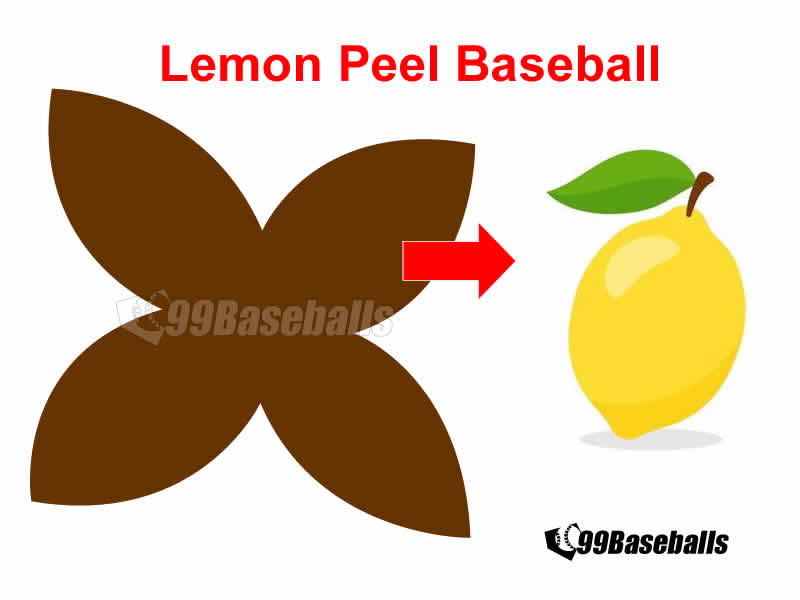
Measuring around six inches in circumference, the cover was made from horse hide scrap and weighed less than a modern baseball. Lemon peel balls also had a darker color (which made it difficult to see during dusk) and it was often softer which made it less durable.
1830 Lemon Peel Baseball
Lemon peel balls from the 1830s came with a rugged, outer seams, characterized by the “lips” or “welds” you see on the surface of a ball.
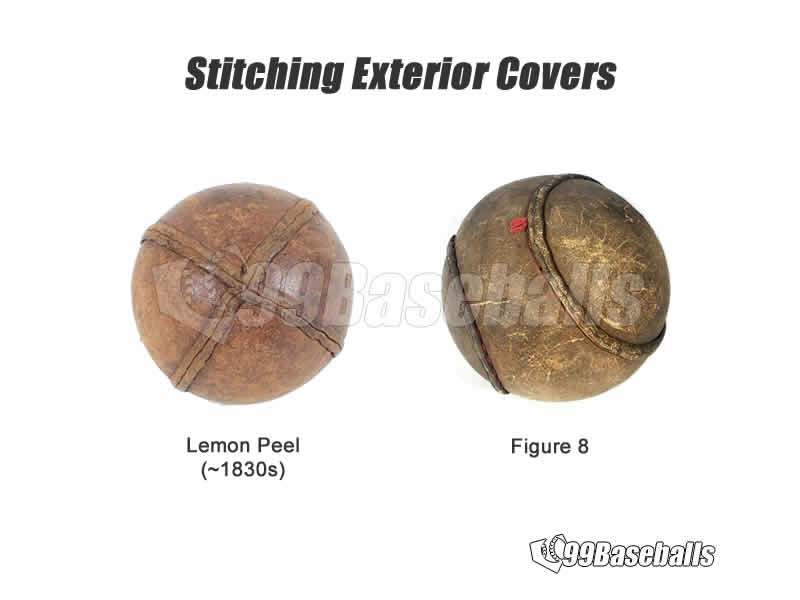
To enclose the core, the lemon peel baseball covers were pinched and lapped together, stitched, then excess trimmed off.
Unfortunately, I do not have access to a genuine lemon peel ball from the 1830s, but take a look a the figure-8 baseball on the right side (from 1850s) and you will see the red thread peaking just underneath the seams.
These surface lips or welds created erratic movements when hit so infielders were often described trying to catch a wild chicken!
1870 Lemon Peel Baseball
The second generation of lemon peels balls were used in the 1870s. These balls had the same lemon peel design but the seams were butted against each other and sewn, forming the modern “baseball stitch”.

Baseball historians don’t know who invented the “baseball stitch” pattern, but most believe it was simply copied from one of the suturing techniques used during that time.
The switch to the baseball stitch eliminated the grooves and most bumps on the surface.
1870 lemon peel ball design was the predecessor to how baseballs are stitched today. However, because it still used four-flap cover design, it still had a single point where four flaps met, meaning the ball still behaved erratically on occasion.
Both lemon peel balls were significantly small, measuring around six inches in circumference, and belonged to the “dead balls” era due to lack of hits.
Figure-8 Baseball (late 19th century)
During the late 1890s, the invention of figure 8 cover design also brought stitch design changes which eliminated the single point where all stitches met.

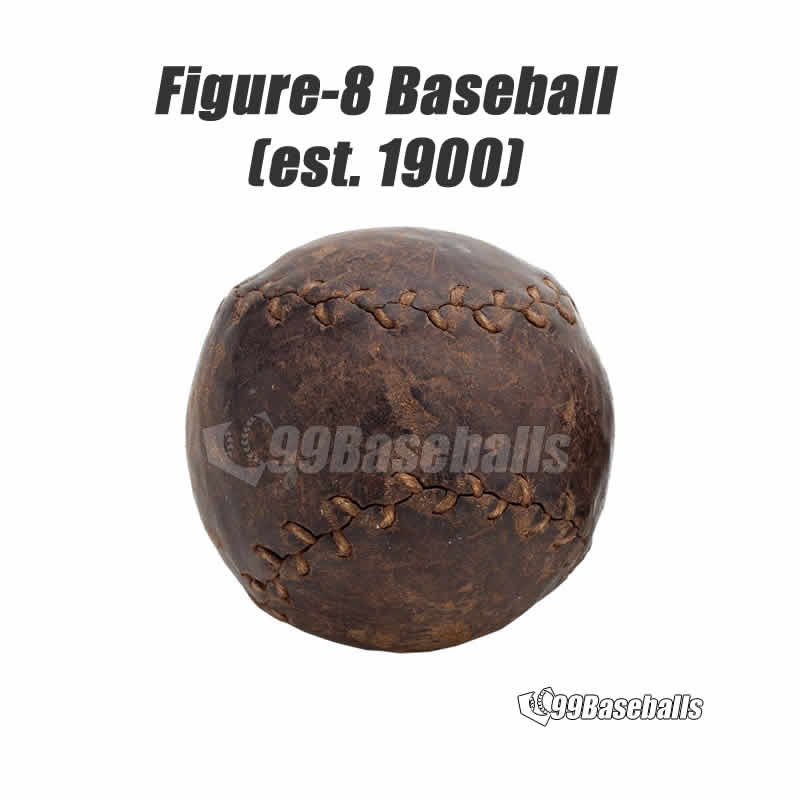
Modern “Figure 8” cover design was not commonly used until 1930.
Baseball Leather Covers and Stitches
Several baseball historians say that the original design was developed by Ellis Drake who was a son of a shoemaker. As a hobby baseball player, he apparently came up with the figure eight design by using some of his father’s scrap leather in an effort to create a more resilient cover.
Others say that it was Colonel William A. Cutler (1834-1887) who invented the figure eight cover and stitching for baseballs and sold it to Harrison Harwood Sr.
Harwood and Sons, based in Natick, MA, manufactured one of the first Official League Baseballs.
Today’s baseball design has not changed much since 1920s when American and National leagues standardized the size and weight of a baseball. Measuring nine inches in circumference with its distinct and instantly recognized 108 double stiches (or 216 stiches in total) holding together the two leather cover pieces.
Each baseball comes with two leather or synthetic covers and the perimeter of each cover measures 17 1/4 inches or 44 cm in length. Each cover also come with pre-punched 108 holes. That translates into roughly 6.5 double stitches for every inch.
From stitch thread thickness and weight to the distance between stitch hole distances, baseball stitches are integral to a baseball’s behavior including aerodynamics, durability, and tactile response.
^ Return to the Table of Contents
Sewing Baseball Stitches
Baseball stitching process can be broken down into five steps:
- Cover assembly
- Needle threading
- Start of stitching (anchoring the first stitch)
- Stitching
- Final stitching (anchoring the final, hidden, thread)
It takes roughly 13 minutes to make a baseball from start to finish and 80% of that time is taken up by a worker carefully hand stitching!
I captured these screenshots to guide you through the key steps. I highly recommend you watch the YouTube Video How Baseball Are Made
Cover Assembly


Needle threading


Start of stitching
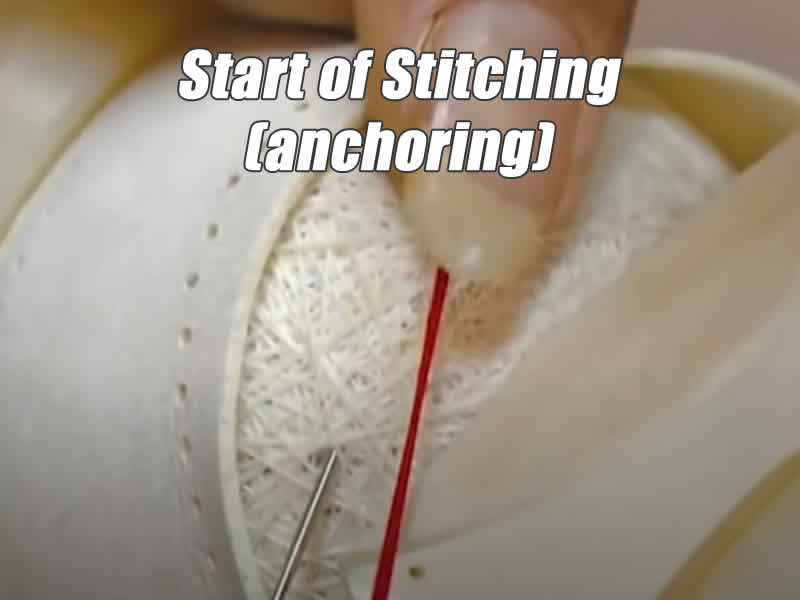
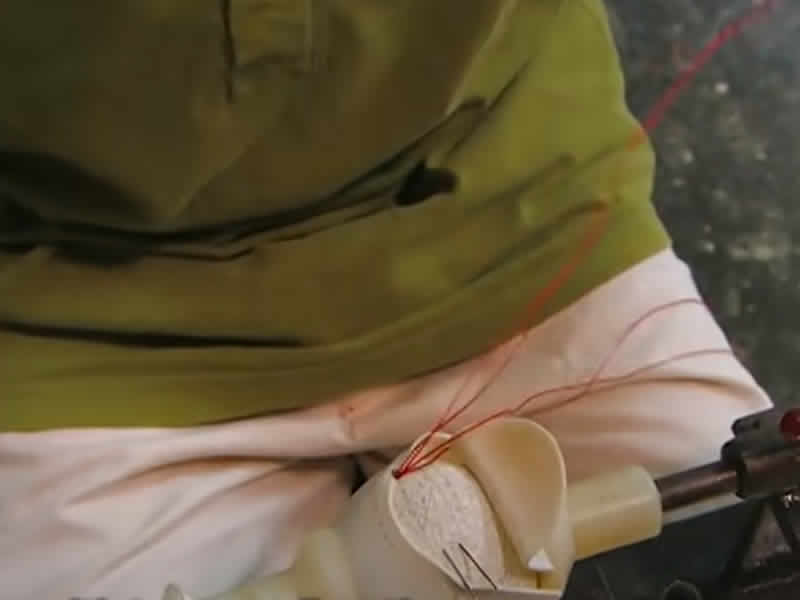
Stitching

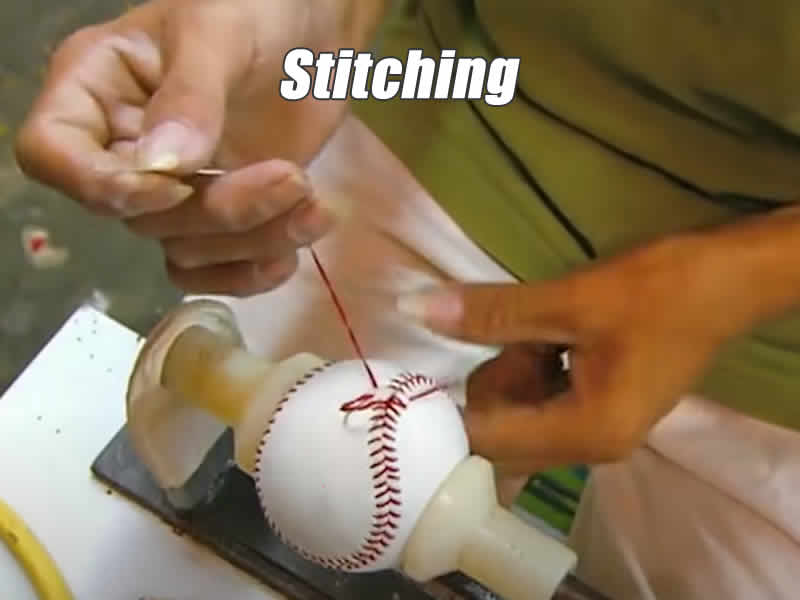
Final stitching
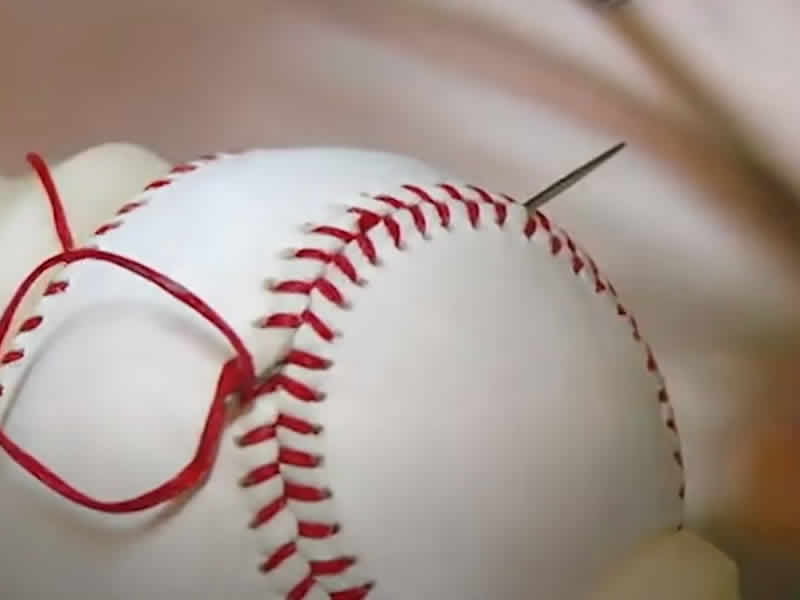

As incredible as it sounds, all MLB game-ready baseballs are still hand-stitched by experienced baseball crafters working in the Costa Rica plant.
| Baseball Stitching Pattern – Single Stitch vs Double Stitch |
|---|
| Early baseballs were stitched using the single (needle) stitch method. All modern baseballs are made with double (needle) stich method where threads cross each other and involves one contiguous, 88-inch long baseball stitch thread with one stitching needle at each end. |

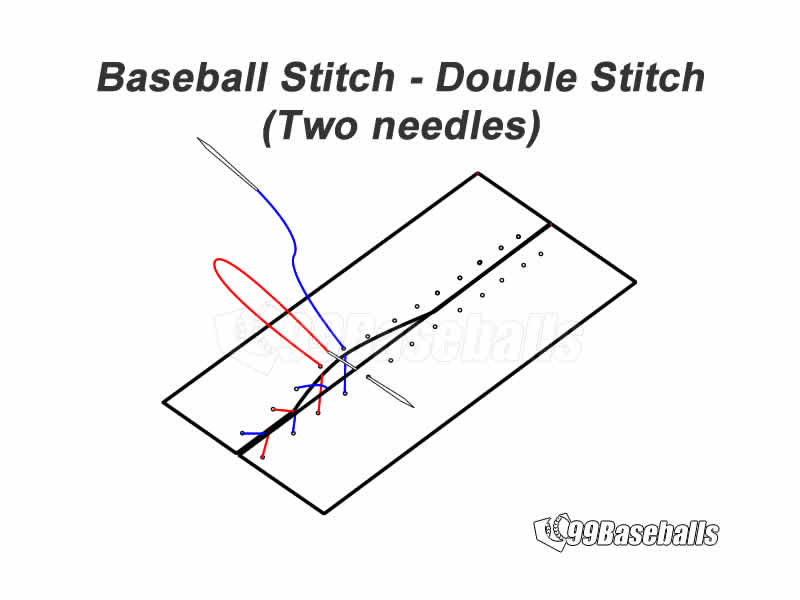
Takeaways
From delicate balance between design, material selection, and dexterity required to perform 108 double stitches, it is truly mindboggling how much craftsmanship is required to produce two million plus baseballs every single year.
It is incredible that these seemingly simple, red baseball stitches that are still hand-stitched, have such a large impact on how the game is played today.
Pitchers are very picky about the quality of a baseball, from the four-seam to two-seam and everything in between grip, varying the ball release to introduce spin, to angle of the arm to change the ball trajectory, they will not hesitate to reject a ball if the baseball stitching and seams do not feel right.
Many “juiced baseball” controversies have risen during the entire history of baseball because leagues made subtle changes to baseball stitch specifications like the width, tension and baseball stitch thread materials which all resulted in record home runs being hit during regular seasons.
Despite all the advancements in technology and materials science and controversies, the fact that the fundamental design of the baseball (including 216 single baseball stitches) has remained consistent for over a century is a testament to the enduring brilliance of its simple and elegant design.
The red, waxed baseball thread that are carefully handstitched on every single baseball, which at first seems like an afterthought, is a perfect example of how simplicity and complexity can coexist in harmony, with each stitch representing the spirit and the science of this beloved sport.
The enduring image of a baseball stitched with red, cotton wax thread remains an iconic symbol, a testament to the deep-rooted history of the baseball craftsmanship.
| Please don’t forget to visit Buying Baseballs – Reference Articles page to read other fascinating information about baseballs! |
Frequently Asked Questions
- What is the baseball stitch?
- The baseball stitch is a continuous, unlocked stitch in which the needle is driven through the baseball cover holes to create a seam on a baseball
- How long does it take to hand stitch the cowhide covers?
- It takes about 13 minutes to make a single baseball, and 80% of that is spent on hand stitching the covers together
- Where are ROMLB and ROLB baseballs made?
- Rawlings Official MLB (ROMLB) balls used in MLB games are made exclusively at the Las Americas plant in the community of Turrialba, Costa Rica. On the other hand, Rawlings Official League Baseball (ROLB) are made at various plants in China and Southeast countries like Vietnam.
- How many ROMLB baseballs are made at the Costa Rica plant?
- Rawlings produces roughly 85,000 baseballs at the Costa Rica plant
- How many employees make baseballs at the Costa Rica plant?
- There are roughly 600 employees making baseballs in the Costa Rica plant
- Does baseball stitching have any impact on the game?
- From the seam height, grip, to “slickness” of a baseball and baseball stitches can all have a great impact on how baseball game is played
- How do you join two leather covers together?
- The baseball stitch is called a butt-stitch because the two pieces of leather being stitched don’t overlap, instead butt up against each other
- What do the stitches on a baseball mean?
- Baseball stitches binds two baseball covers together to form a completed baseball, and allows a pitcher to vary his grip to change the ball angle and rotation speed to throw different types of pitches
- How do the stitches on baseballs affect their flight?
- When a pitcher throws his throws the ball at a specific angle and rotation (RPM), the rotation creates Magnus Effect. Magnus force states that on a rotating object, there is a pressure differential from one side to another, creating a pushing or curving effect to the side that has less air pressure
- Why are baseballs stitched the way they are?
- There are exactly 108 double stitches (or 216 single stitches depending on how you count them), to provide the most efficient way to bring two leather covers to form a sphere. Too few stitches allows warps between holes; too many holes will create a solid ridge (must like the 1830’s lemon peel ball) which creates unanticipated problems for both pitchers and fielders
- How does baseball stitching impact the game?
- That stitching plays a significant role in the trajectory of a thrown baseball due to the drag caused by the interaction between the stitching and the air. Controlling the orientation of the stitches and the speed of the ball’s rotation allows a pitcher to affect the behavior of the pitched ball in specific ways
- Why are baseball threads cross-stitched under the cover instead of over?
- Forming a cross-stitch (or “X” pattern) on top of the seam creates undesirable bumps on the surface of a baseball
- Why are baseball threads cotton? Isn’t polyester thread more durable?
- Red, waxed cotton thread is used as a baseball stitching material partly due to tradition and partly because it allows better tactile feedback to a pitcher (pitchers hate slick baseballs). As far as durability goes, polyester baseball stitches do exist in inexpensive balls, but they tend to cause stitching holes to rip more than cotton threads
- What is the difference between a baseball stitch and a baseball seam?
- Baseball stitches provide structural integrity to a baseball. A baseball seam is a byproduct of baseball stitchings and a ridge formed on the baseball cover where stitches are sewn
- What happens when baseball stitches break?
- For Major League baseballs, that is pretty much the end of life of that particular ball. There are many hobby DIY kits that allows you to re-string or re-wrap the core of a baseball
- Backstitching is the strongest type of stitching so why aren’t baseballs made with backstitching?
- Backstitching has superior holding power over baseball stiching BUT in order to do the backstitching, the cover needs to be inside out; can’t do that because the core of the baseball needs to be wrapped by the cover
- Why can’t baseballs be machine-stitched instead of being hand-stitched
- As a baseball fan, I think imperfections is what makes baseball interesting. Talks about replacing the plate umpire with a robot and making machine stitched baseballs are ridiculous to me so stop with that non-sense! Seriously, a United Shoe Machinery Corporation (USMC) during 1960s tried to create one but determined that there were too many uncontrollable variables.
- Are baseballs machine stitched?



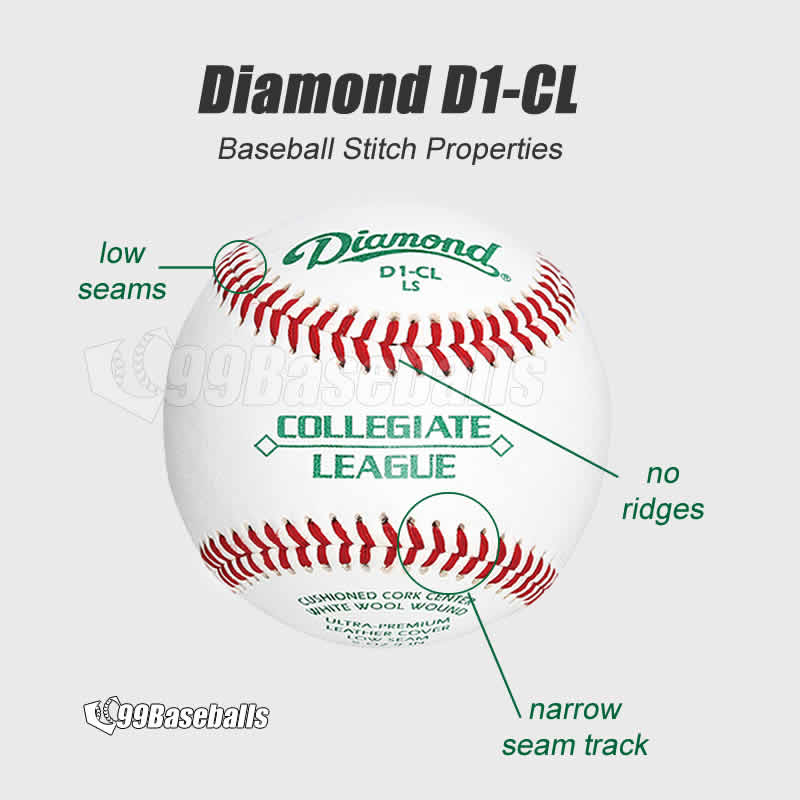
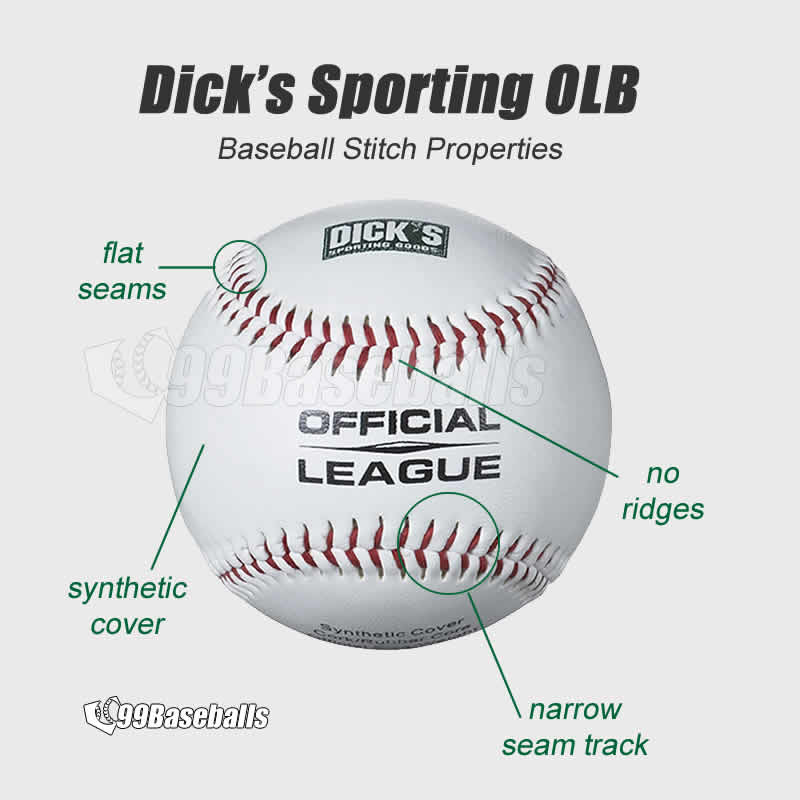
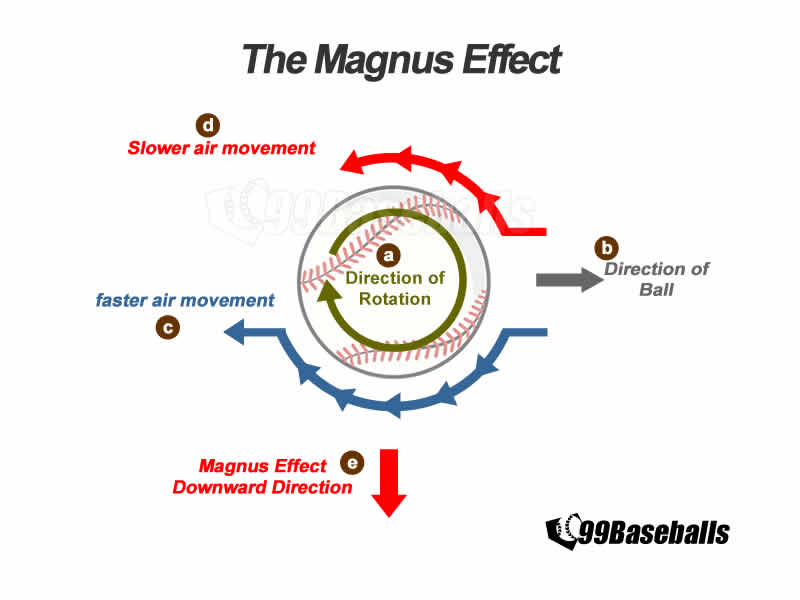
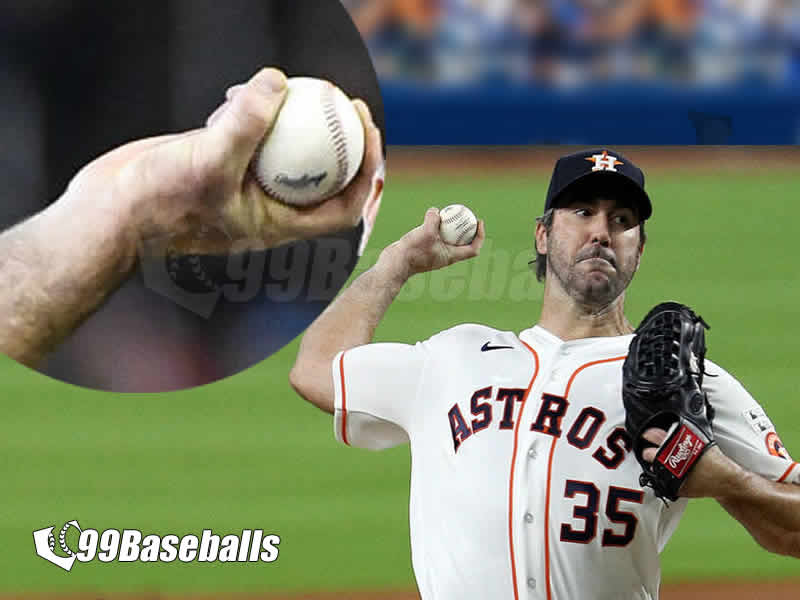
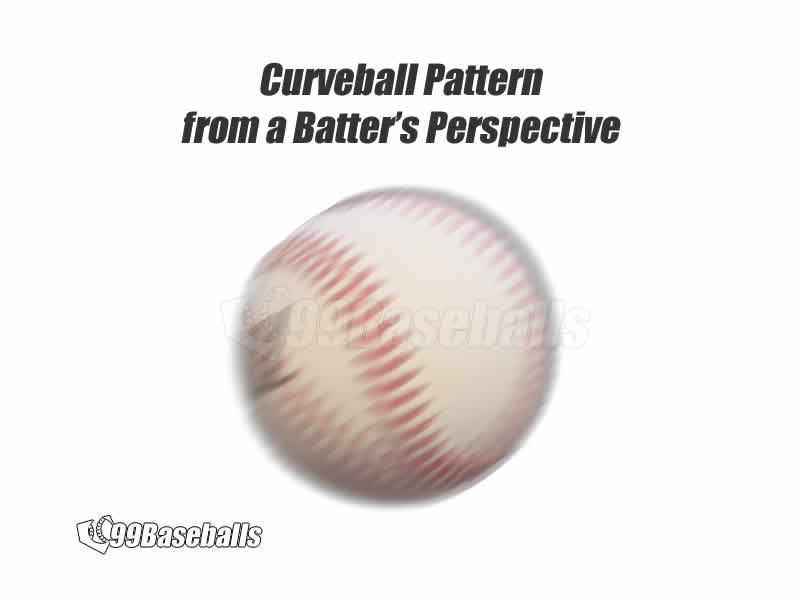
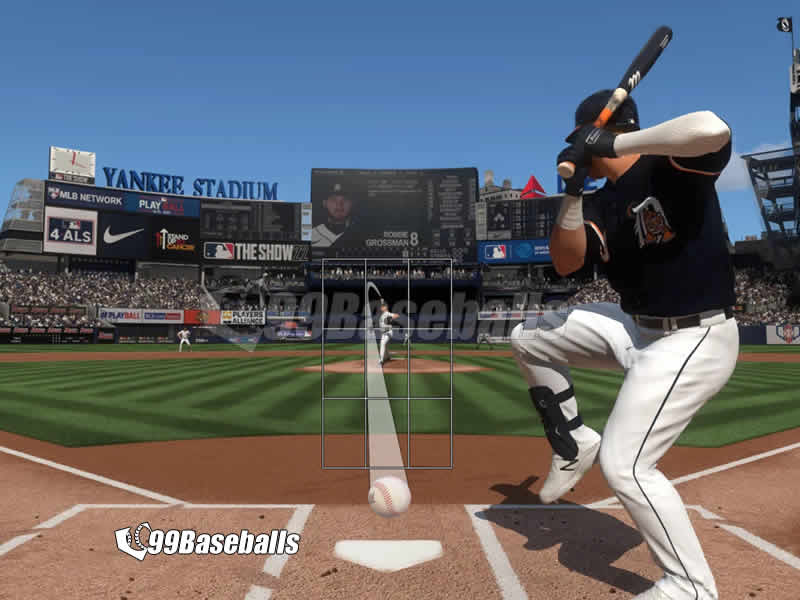
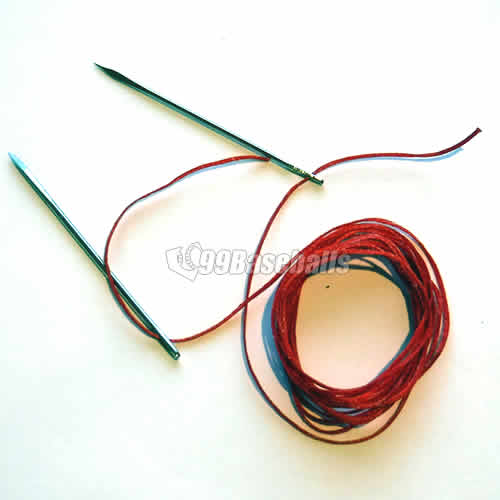
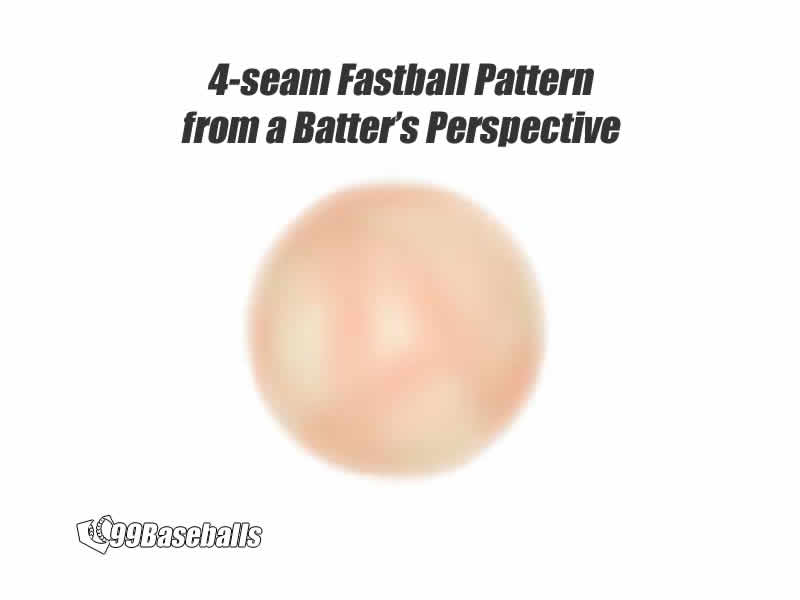
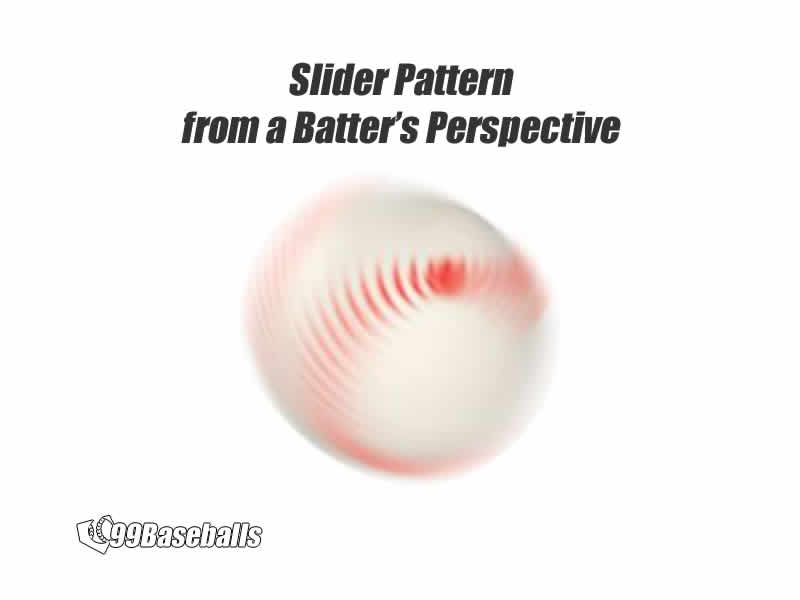
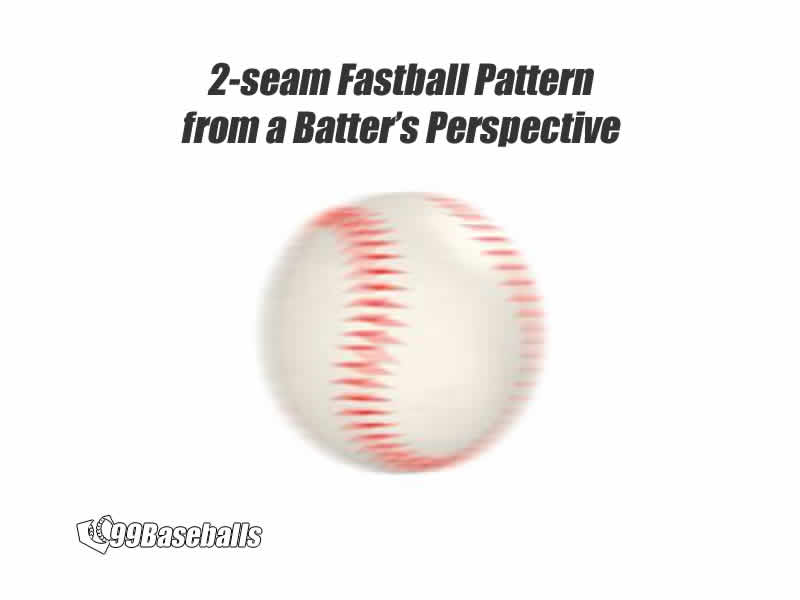
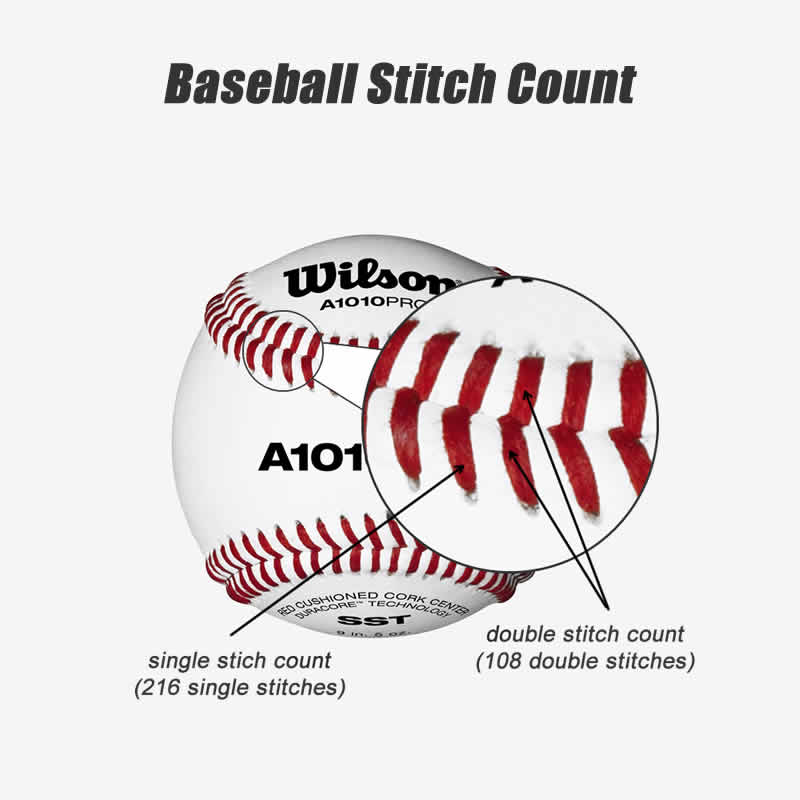
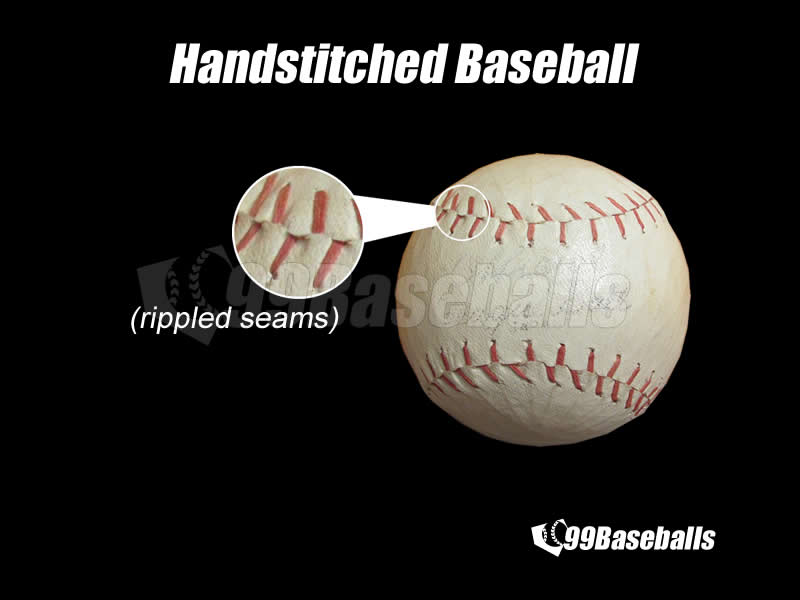
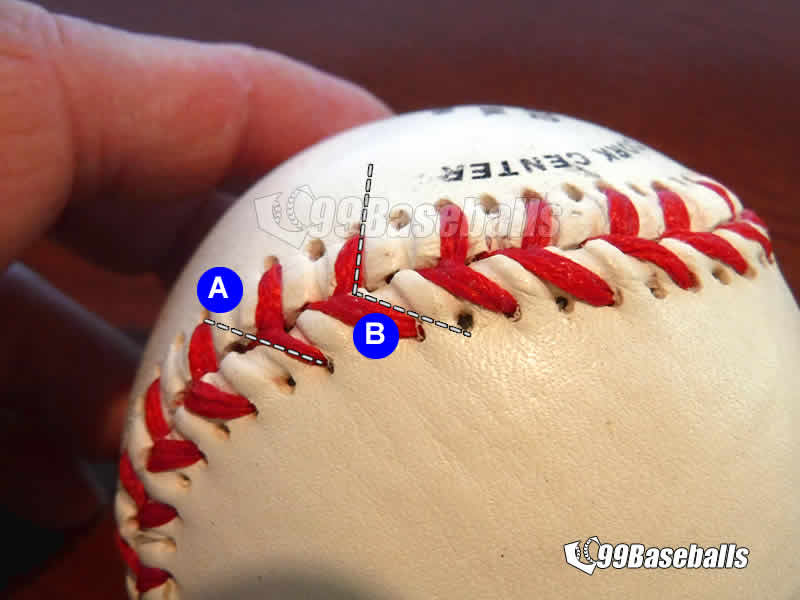

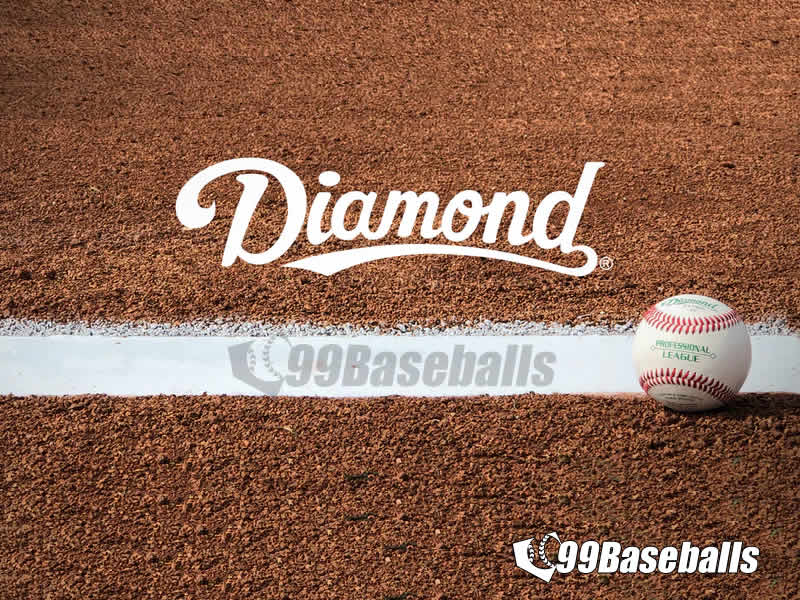
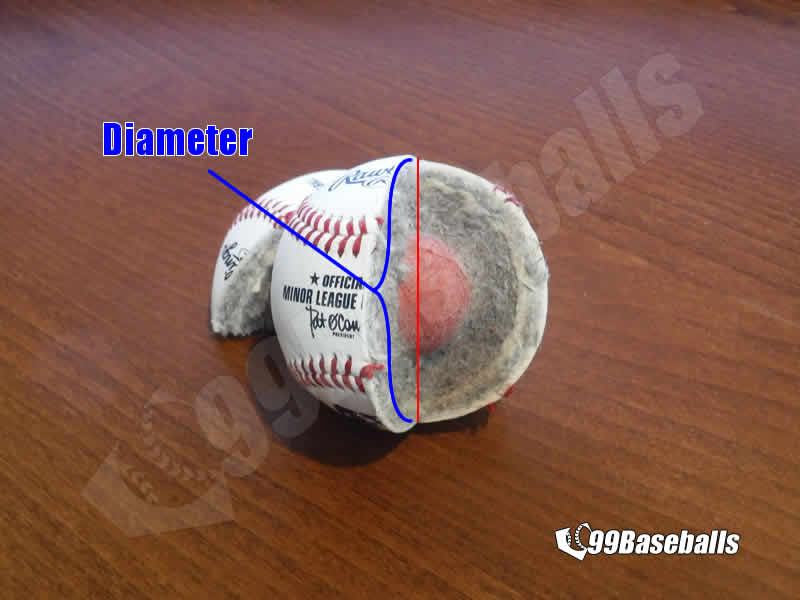
Darell Phillips
Friday 1st of September 2023
Ok, I’m back with another question. In looking at the rule 1.09 above, it says that there are three layers of yarn around the rubber center. I just visited MLB.com and their rule 2.09 is very abbreviated and doesn’t have the details your version has. Other sites like Wikipedia state there are four layers of yarn. However, I think they are including a fourth layer of yarn between the cork center and the rubber adhesive inner shell. Although your 1.09 is quite detailed as to the three major layers of yarn, it doesn’t mention this 4th inner layer. I find it interesting that your 1.09 version is more detailed than the MLB version, which is quite UNinformative. Do you know WHEN your version is dated from?
Darell C Phillips
Wednesday 23rd of August 2023
Oh, something else. These "88" stitches are the visible ones. That should mean that, including the first and last being hidden, there are really 90 stitches on the ball. This should also mean that the person that stitched the ball used a shorter thread length than the fixed 88." The number 88 is still on the ball, but it transferred itself from the thread length to the visible number of double stitches. :) Is there any way that this ball is unique and therefore valuable? I could certainly use the money!
Baseball Dad
Thursday 24th of August 2023
Hey Darell,
Thanks for your question. I believe MLB has contracts with several manufacturing plants in China that produce baseballs NOT intended for MLB.
For example, I recently purchased a bunch of MiLB game balls and they are made in China.
I can't really speak to the value of your particular baseball as I am not an appraiser.
Darell C Phillips
Wednesday 23rd of August 2023
I recently purchased a supposed MLB ball from Amazon.com. It is marked as official and has the commissioner's signature. However, it is marked as Made in China with ESLE117. My research states that Official Rawlings MLB balls can only be made in Costa Rica. There is a factory in China that is licensed to make balls but they are only for Minor League play. I even called MLB the other day and after being on the phone for around 30 minutes, they knew about these balls from Amazon but didn't care. It was cheap (about $8) and they said "real" official balls cost much more. I made a joke that mine was an "unofficial official" ball and she laughed. Here is another oddity. I counted the threads and there are 88 double stiches- not 108 as it should have been. It's right at 9" in circumference so that is within the rules. Have you ever come across this before? Like I mentioned before, the MLB didn't care that these were being sold as "Official" balls.